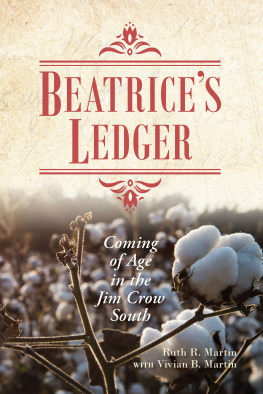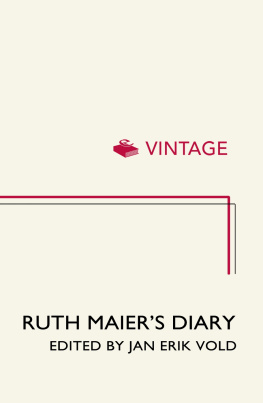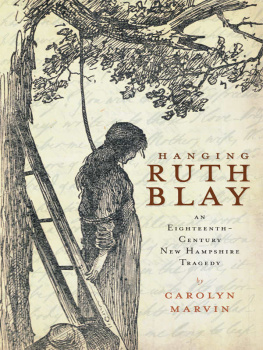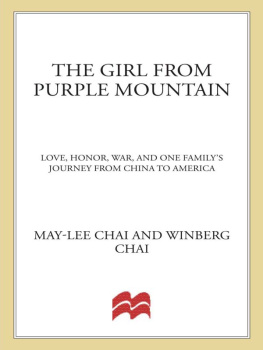Ruth R. Martin - Beatrices Ledger: Coming of Age in the Jim Crow South
Here you can read online Ruth R. Martin - Beatrices Ledger: Coming of Age in the Jim Crow South full text of the book (entire story) in english for free. Download pdf and epub, get meaning, cover and reviews about this ebook. year: 2022, publisher: University of South Carolina Press, genre: Non-fiction. Description of the work, (preface) as well as reviews are available. Best literature library LitArk.com created for fans of good reading and offers a wide selection of genres:
Romance novel
Science fiction
Adventure
Detective
Science
History
Home and family
Prose
Art
Politics
Computer
Non-fiction
Religion
Business
Children
Humor
Choose a favorite category and find really read worthwhile books. Enjoy immersion in the world of imagination, feel the emotions of the characters or learn something new for yourself, make an fascinating discovery.
- Book:Beatrices Ledger: Coming of Age in the Jim Crow South
- Author:
- Publisher:University of South Carolina Press
- Genre:
- Year:2022
- Rating:5 / 5
- Favourites:Add to favourites
- Your mark:
Beatrices Ledger: Coming of Age in the Jim Crow South: summary, description and annotation
We offer to read an annotation, description, summary or preface (depends on what the author of the book "Beatrices Ledger: Coming of Age in the Jim Crow South" wrote himself). If you haven't found the necessary information about the book — write in the comments, we will try to find it.
A vivid and moving story about family, courage, and the power of education
Ruth remembers the day the sheriff pulled up in front of her familys home with a white neighbor who claimed Ruths father owed her recently deceased husband money. It was the early 1940s in Jim Crow South Carolina, and even at the age of eleven, Ruth knew a Black persons word wasnt trusted. But her father remained calm as he waited on her mothers return from the house. Ruths mother had retrieved a gray book, which she opened and handed to the sheriff. Satisfied by what he saw, the sheriff and the woman left. Ruth didnt know what was in that book, but she knew it was important.
In Beatrices Ledger, Ruth R. Martin brings to life the stories behind her mothers entries in that well-worn ledger, from financial transactions to important details about her familys daily struggle to survive in Smoaks, South Carolina, a small town sixty miles outside of Charleston. Once the land of plantations, slavery, and cotton, by the time Ruth was born in 1930 many of the plantations were gone but the cotton remained. Ruths family made a living working the land, and her father owned a local grist and sawmill used by Black and white residents in the area. The family worked hard, but life was often difficult, and Ruth offers rich descriptions of the sometimes-perilous existence of a Black family living in rural South Carolina at mid-century.
But there was joy as well as hardship, and readers will be drawn into the story of life in Smoaks. Enriched with public records research and interviews with friends and family still living in Smoaks, Martin weaves history, humor, and family lore into a compelling narrative about coming of age as a Black woman in the Jim Crow South. Martin recounts her journey from Smoaks to Tuskegee Institute and beyond. It is a story about the power of family; about the importance of the people we meet along the way; and about the place we call home.
Ruth R. Martin: author's other books
Who wrote Beatrices Ledger: Coming of Age in the Jim Crow South? Find out the surname, the name of the author of the book and a list of all author's works by series.











